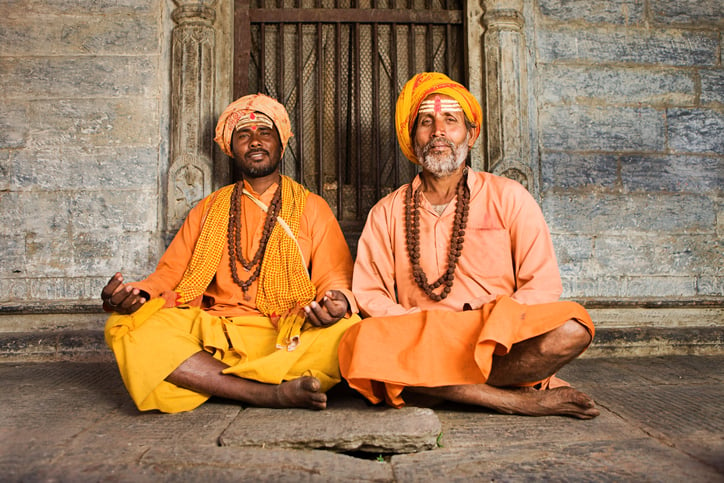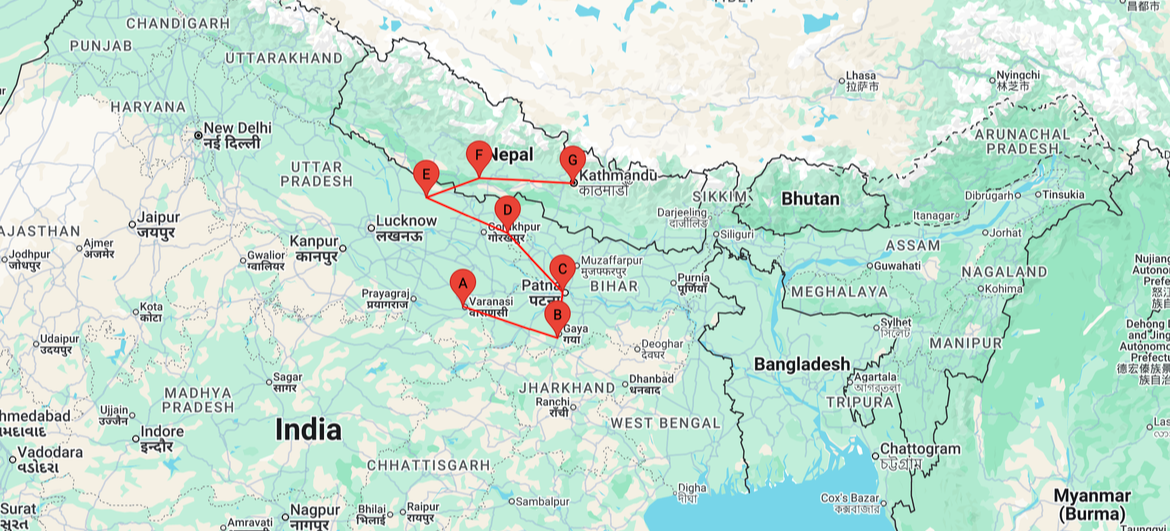Varanasi Arrival
Namaste. Welcome to Varanasi! Upon arrival, meet our representative and transfer to the hotel. Varanasi, also known as Benares, is one of the oldest inhabited cities in the world. It is raw, sacred, and mystical. According to myth, the city was founded by the Hindu deity Shiva, making it one of the most important pilgrimage destinations in the country. Situated on the banks of the Ganges River, Varanasi is one of the seven sacred cities of Hindus.
In the evening, observe the devout Hindus performing the Aarti Puja with lighted lamps. The presiding priests stand on a Chauki (wooden stand) near the water. To the chant of Sanskrit mantras, and the clash of cymbals and drums, the river is worshipped with flowers, incense, sandalwood, milk, and vermilion. First the blazing camphor lamp and then the many flamed Aarti lamps are raised high and then arched back to the water, the dark river reflecting the golden flames as Ganges accepts the worship. It is the Ganges that gives Varanasi its spiritual resonance. Overnight in Varanasi.






.png)
